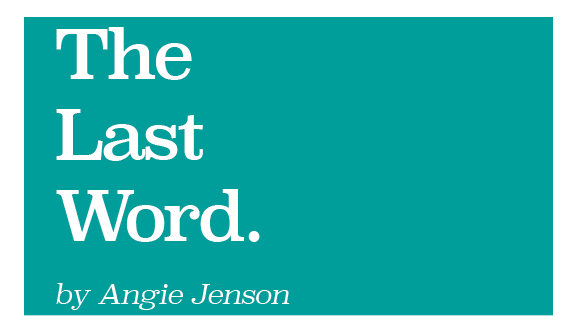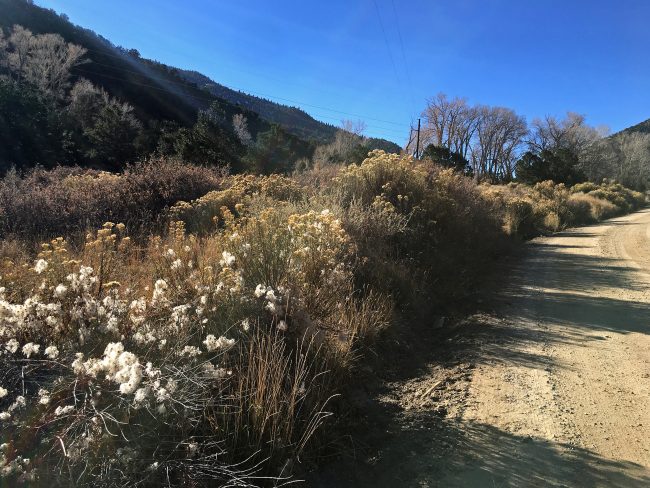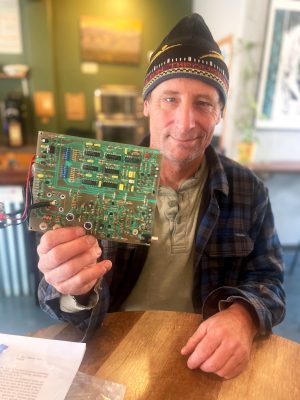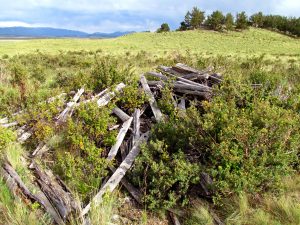
MY CAREER HAS BEEN FOR THE TREES. I earned a university degree in forestry and worked for five years as a wildland firefighter. My education and my work as a firefighter instilled in me “The Prescription” for both how to manage forests and how to stop wildfires.
Nineteen years ago, with entrepreneurial enthusiasm and a love of the physical conditioning that comes from wielding a chainsaw, I set out to sell The Prescription of cutting trees. Being in the forestry business, I quickly learned about ArborCare, and I enrolled in tree-climbing and tree-pruning workshops. I was hooked and studied for three years to become a certified arborist.
ArborCare, the care of individual trees, mostly in the urban environment, offers a different approach than do the university-trained foresters and firefighters with whom I’d worked previously. I quickly realized my growing knowledge as an arborist often conflicted with the forestry prescriptions of wildfire mitigation.
Wildfire mitigation prescriptions ask property owners to remove live limbs from the bottoms of their trees — what they call ladder fuels. Arborists call this practice “lion-tailing,” and it is highly discouraged. The limbing of live branches results in a “bleeding” tree. Sap weeps out of cut wounds, resulting in deformed trees shaped like lollipops. The mitigation prescriptions intended to prevent wildfires from “crowning” and spreading from one treetop to the next is supposedly accomplished by thinning out the trees in the forest to give each tree its own spacing. When thinned to this prescription, forests exhibit “checkerboard” spacing that always seemed very unnatural to me. Trees that had generational support from their community of neighboring trees then find themselves disconnected from their network of health.
As a forester, wildland firefighter and arborist, I found these ideas from my early education very unsettling — even more so when I started studying Permaculture, companion planting and soil building. More recently I’ve been introduced to the world of fungi, where I have come to understand the underground mycelium network that connects trees through their roots, fostering communication and additional community support.
So, my intuition was supported by this new understanding that trees don’t compete with each other; in fact, they depend on one another for support as they feed on soil nutrients and share them. They also support each other by dispersing wind and keeping each other cool with the shade they cast. The soil is also dependent on the presence of trees, which add biomass and support the conditions needed for a healthy soil microbiome.
But how could I question my university education? Why do I cringe when I hear that trees are “dangerous” and “hazardous”? Where did that narrative come from?
I noticed that insurance companies picked up on the wildfire mitigation trend and sent out flyers and emails to homeowners telling them to limb up and cut down their trees without any consultation from a holistic stewardship approach. I witnessed the pressure on forests from development of “mini-ranch” subdivisions with large-footprint homes sporting large garages and workshops (outbuildings). The “defensible space” requirements needed for these homes means even more trees get cut down. Each building of a home eats away at our forest canopy. Nevertheless, homes are a blessing to humans; and if they are inhabited, they serve a great purpose. And yet I wonder, why are we cutting our piñon and juniper trees to create a “checkerboard-tree firebreak” when we know the truly destructive fires are weather-driven and can spread cinders well beyond every conceivable “fuel break”?
Instead of needlessly cutting so many trees, I think it’s time for a different approach.
What if we had a new story? What if trees were not considered dangerous? What if trees weren’t seen as some wildfire villain? Perhaps we could look at whacking our weeds before we cut the trees.
What if we created a new narrative, one in which land stewardship comes out of love for trees and ecosystems instead of extractive tree cutting out of fear of wildfire?
Solutions? Let’s get creative! Let’s incorporate new knowledge and holistic wisdom.

What if our fuel break consisted of cultivating green vegetation instead of tree stumps and invasive weeds? Can we manage those fine fuels that quickly dry to become more volatile and combustible than trees (live or dead)?
What if these fuel breaks that the Envision Forest Health Council is creating were managed to build soil and retain water? What if we were to plant native green vegetation that incorporates a system of rotational grazing to support local agriculture in this valley? A “greenbelt” fuel break could include beaver ponds, recreational trails, irrigated fields and grazing plots.
Thoughts? Suggestions? The Town of Poncha Springs has endorsed these ideas; Chaffee County, the City of Salida and Colorado State Forest Service have also expressed support. Feel free to reach out and let’s get creative. We need to tell Envision Chaffee County what we want and what we expect in our forested communities. ?
After recently selling her tree business, Angie is pursuing her passion for Regenerative Forestry and wants to see the forests and their human neighbors live happy and fulfilled lives. She can be contacted at AngieJenson315@gmail.com.
The Last Word is sponsored by Judith and Ed Kinzie.


